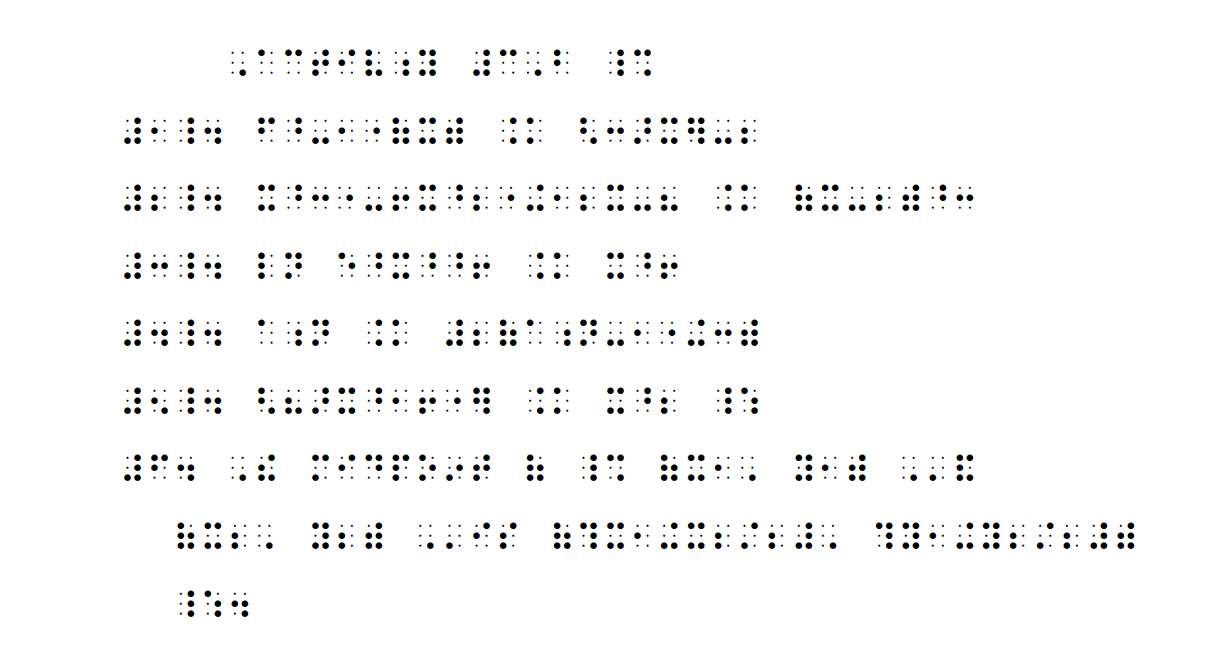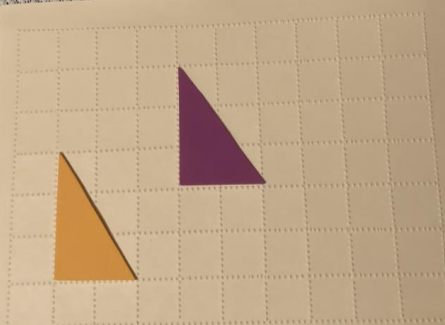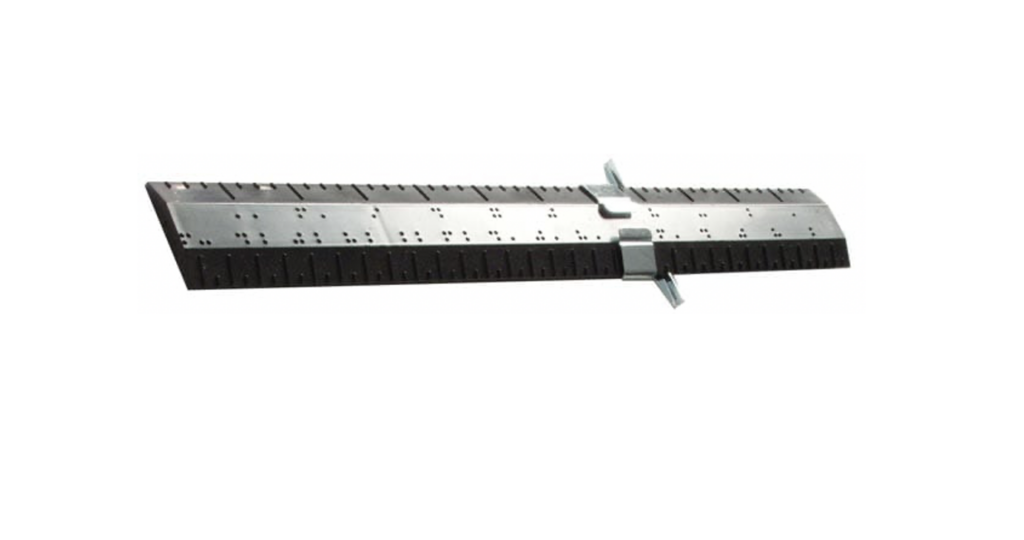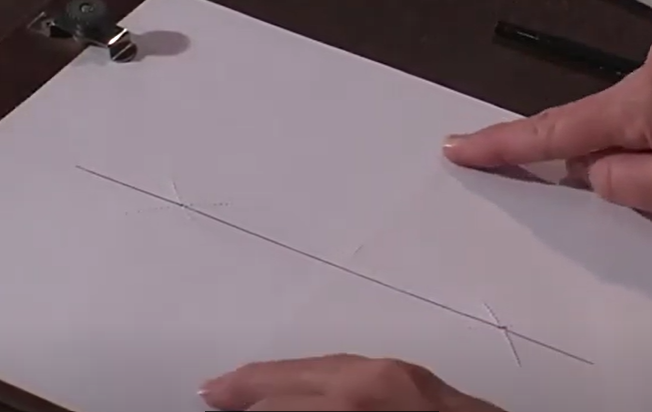In this article readers share different perspectives on the Nemeth Code.
A parent writes
I have been working with my daughter on math, and I know math reasonably, but it is visual in nature and a challenge to know the best way to present it. My daughter is not exactly “resisting” Nemeth, but rather until last year, she was able to pretty much do everything in a print medium, but lost more of her vision making that impossible. She went to a residential school for the blind where she learned braille reasonably efficiently, and she knows Nemeth to “read” it, but writing it is often slow and she makes occasional mistakes — which, of course, makes it difficult.
The school she is in now is a “regular” school that has no experience in dealing with blind students. They have provided the math text (as well as her other textbooks) in braille.
The problem comes in attending classes, where blackboard work to the class is effectively useless, and taking tests, etc. where translating back and forth between braille and print to have effective communication between her and the teacher is proving very difficult. She has traditionally done everything in her head in math (she can do amazingly complex calculations in her head) but obviously, at some point that is an unworkable strategy.
She likes math, she is very good at it, and would like to continue in it. My goal, I suppose, is to try to find the best way to go about this … should we concentrate on Nemeth alone? Or are there other technologies that might make this easier? I, of course, don’t have a clue, and rather than “reinventing the wheel” here, I am hoping to research to find the best way for her to achieve the best she can.
Susan Osterhaus’s Response
I teach secondary mathematics at the Texas School for the Blind and Visually Impaired in Austin. In my opinion, learning to read and write Nemeth Code is absolutely essential for your daughter to be able to continue in higher mathematics. I am surprised that she is better able to read than write. My adventitiously blind students are usually faster at writing than reading. Of course, they do all of their homework for me in Nemeth, so I guess they get LOTS of practice! They use Perkins braille writers and can therefore easily read their own work – especially with all those steps in Algebra. They use either an abacus or a talking calculator to perform long computations. Using the braille writer for computations is too time-consuming. Previously, our standardized tests did not allow any students to use calculators. Now, the TAAS (our state test required for a high school diploma), SAT, and ACT are allowing braille students (and sometimes all students) to use calculators. I still value the use of the abacus as a braille student’s equivalent to paper and pencil for a sighted student.
Here in Texas, a blind student in elementary or secondary school can obtain instruction in Nemeth Code. After high school graduation, they are on their own, and I get frequent calls from college students and their professors on how they can learn Nemeth Code. There are few opportunities for blind college students to learn Nemeth code. So, try this as an incentive for your daughter to learn it now while she still can – assuming of course that she would like to go to college.
I am a user of technology for preparing materials for my students and for correspondence, but the field is way behind for blind individuals, especially in the areas of math, science, and engineering. Although it is easy to translate print into Grade II literary braille, research is still continuing on how to get from mathematical print equations to Nemeth Code and vice versa. I use MegaDots for my worksheets, tests, etc., but it can only do “baby” Nemeth. I still have to braille all my algebra equations, etc. into the computer after I convert the keyboard to six-key pad mode. (I am currently beta testing their advanced Nemeth Translator.) For complete information on the project visit Raised Dots’ Web site. However, I do allow one type of technology, if the braillewriter is not acceptable in the mainstream classroom. A few of my students have used a Braille-Lite which has one row of refreshable braille. The student doesn’t use the translation mode and simply brailles in Nemeth Code and outputs in Nemeth. However, they can always go back a line and reread their last step as they are progressing through an algebra equation or a trig identity. The key features here are that it is a braille device and it has a row of refreshable braille. Other manufacturers have similar devices. I do not advocate the Braille `N Speak (made by the same company) as the student only receives voice-output as they make entries into the equipment.
There are many tools, aids, and supplies for teaching math to blind students, and I hope your daughter has had (and will continue to have) the opportunity to use them. Does she know how to graph on a number line? Does she know how to graph on a rubber graph board (Graphic Aid for Mathematics by APH) or raised line graph paper on a cork board independently? Does she know how to measure an angle using a braille protractor (modified goniometer)? Can she (or will she) learn how to do constructions in Geometry using a braille compass and straightedge? Is she provided manipulatives, especially in Geometry?
An opposing view
Hi. I have been totally blind from birth. I remember math being one of the most difficult subjects because of its visual nature. There are a couple suggestions I would have to help deal with this problem. First, it is my opinion that Nemeth code is an absolute nightmare. It looks like jumbled up nonsense under the fingertips. I took a course just so I could learn to read my math books, and it was still ridiculously difficult. I realize this is going to stir up some controversy, but I feel that private tutoring in math is the best way to approach this, and it gives your daughter the best chance for really understanding the concepts. I recommend the use of what is known as a raised line drawing kit to help your daughter attempt to visualize how math problems are arranged. This is particularly important when dealing with fractions. You can obtain the raised line drawing kits from suppliers of blindness-related equipment. I learned the shape of the numbers so that sighted folks could demonstrate concepts for me with the raised line drawing kit. There is also something called a cube slate which also can be helpful. I don’t know if the cube slates are sold anymore, but they have cubes with all the braille number combinations and a rubber board so that the cubes can be arranged to help keep track of what one is doing. Maybe a combination of these tools would be the best bet.
Susan replies
I’m sorry to hear that you had such a negative reaction to Nemeth Code. I do not find it to be a “jumbled up nonsense under the fingertips”; on the other hand, I think for the most part that it is very logical, systematic, and an absolute miracle for braille readers wishing to continue in higher mathematics. I am not a tactual reader though. As a math teacher with visually impaired students, I taught myself to read Nemeth Code visually (and braille it) out of necessity to be able to teach my students. There were no courses at the university in Nemeth above the basic numbers and operations, and I needed to be able to teach Pre-Algebra, Algebra I, Informal Geometry, Geometry, Algebra II, Math of Money, Trigonometry, etc. As I would introduce each new print mathematical symbol, the students and I would learn the corresponding Nemeth symbol; as I said earlier, I really learned to appreciate the logic of why Dr. Nemeth did what he did. Perhaps the key here is that students learn Nemeth Code most easily if they learn each new symbol as they progress through the mathematics. Learning Nemeth as a separate course from mathematics is as logical as a sighted person learning all the print mathematical symbols in a separate course. However, sometimes lack of time necessitates the Nemeth Code class.
I do agree that tactile graphics made using the tactile graphics kit by APH can be extremely useful – especially when created by certain people more artistic than I am, such as the Region IV Service Center in Houston, Texas. I was on a panel of experts called in to help facilitate the improvement of such graphics for our TAAS (state test required to graduate from high school) and for our math textbooks.
I do not like the graphics produced from the Sewell raised line drawing kits, except for emergency situations. They are too flimsy when using the plastic wrap type film that comes with the kit. However, when a piece of braille paper is placed on the drawing board and a tracing wheel and braille compass are used along with a straightedge, even I (no artist) can make an excellent quick-fix graphic that any Math teacher (non-VI certified) can use to communicate with a blind student.
If you have access to a stereocopier machine (newer versions are less expensive), you can transform black-lined print graphics into raised line drawings within a matter of seconds. I have also had great success using sturdy manipulatives to introduce many math concepts.
A successful blind Nemeth Code user replies
Actually, I had no trouble with the Nemeth code at all. I was first introduced to it in second or third grade. (When do we start doing math these days?) Anyway, my itinerant teacher did not know Nemeth at all, so it was up to me to learn it. And learn it I did, as I went along. I had very little difficulty with it, and math in general was no trouble (until I reached trig in 12th grade). Algebra was only minimally annoying with the graphed equations, but trig has lots and lots of them, and I’m sorry to say, that is the first math class I did not get at least a B in. Oh well. That’s ok though, because if I need something like that done now, I just use my computer. *grin* Well, guess that’s it. Nemeth isn’t all that bad, it just takes some time. It’s actually not all that different from regular braille (whatever that is) and I found it very easy to learn.
From a Network Specialist in a data communications group
I read your messages to the list with much interest. I fully agree with your statements about the Nemeth Code and wonder what sort of educational hiccough occurred which broke the learning process for the person who did not do well with it.
I find it alarming and totally unnecessary that so much of the blindness community seems to think that science and math are to be avoided at all possible cost. There certainly are problems in communicating mathematical ideas using tactile methods, but it is sure not impossible by any means. I know that there are blind engineers and people should think of at least one blind mathematician every time they use natural logarithms. There is just no excuse for a blind kid graduating from high school without even having had Algebra.
Yet another supportive user
I really enjoyed your messages! Would you consider giving a summer crash course in Nemeth and Math. I’ve done the Hadley course, read the Bana computer code, but really have little confidence in my math skills such as Algebra, and the stats I took in Grad school. You ought to consider a math camp for adult blind-I know you’d get a result. I’d come!
A returning student
I lost my sight 7 years ago as a result of diabetic retinopathy. In January I will be returning to school at the University to pursue simultaneous bachelor’s and master’s degrees in computer science (I already have about 3/4 of my EE degree, but haven’t been to school in over 15 years), and for the first couple of semesters I will be concentrating mostly on my math courses. After talking with many people about this, I have decided to approach this by using Nemeth braille – I have talked to a few who have managed to “pass” their math requirements without braille, but most of them admit that it was a struggle, and once the course was completed, they quickly forgot about it. I want more than that; I want mastery, and I’m convinced that braille is the only way to go to get to this level. In case you’re wondering, yes, I do read grade II braille, and do have enough sensation in my fingers to do the job – not very fast, but that will come with more practice.
Once again, I want to say thanks for your positive approach to math and technology for blind students – the more things like this that I read, the more convinced I am that I am making the right choice.
This article was originally published in the See/Hear Newsletter (Fall 1997) by Texas School for the Blind and Visually Impaired (TSBVI) and is reprinted here with permission. Updated in 2024.




